Groundbreaking News: The UAV industry just witnessed a significant milestone as a leading company successfully completed the first autonomous drone delivery across state lines, revolutionizing logistics and supply chain management. Read more about this innovation on Commercial UAV News
Top 7 GAP Selling KPIs to bridge the gap between current and future states
Actionable insights on measuring and maximizing sales impact
Expert answers to frequently asked questions about GAP Selling KPIs
Strategies to implement these KPIs effectively in your business
👇 Download: Evolve your methodology. Learn to build a collaborative effort with your buyer to identify the true source of their problem, evaluate the impact of that problem and work together to find a solution to fill the gap.
TOP STORY
Introduction
In today's competitive business landscape, understanding where your customers are now (Current State), where they want to be (Future State), and the impact of bridging that gap is crucial for success. GAP Selling is a powerful methodology that focuses on these elements, but to leverage it effectively, you need to measure what truly matters. This means identifying and tracking Key Performance Indicators (KPIs) that provide actionable insights into your sales process.
According to a study by McKinsey & Company, companies that leverage data-driven sales strategies experience a 15-20% increase in sales productivity. By focusing on essential GAP Selling KPIs, you can not only boost your sales performance but also create lasting value for your customers.
7 Essential GAP Selling KPIs
1. Gap Identification Rate
This KPI measures how effectively your sales team identifies the gap between the customer's Current State and Future State. A higher rate indicates a deeper understanding of customer needs.
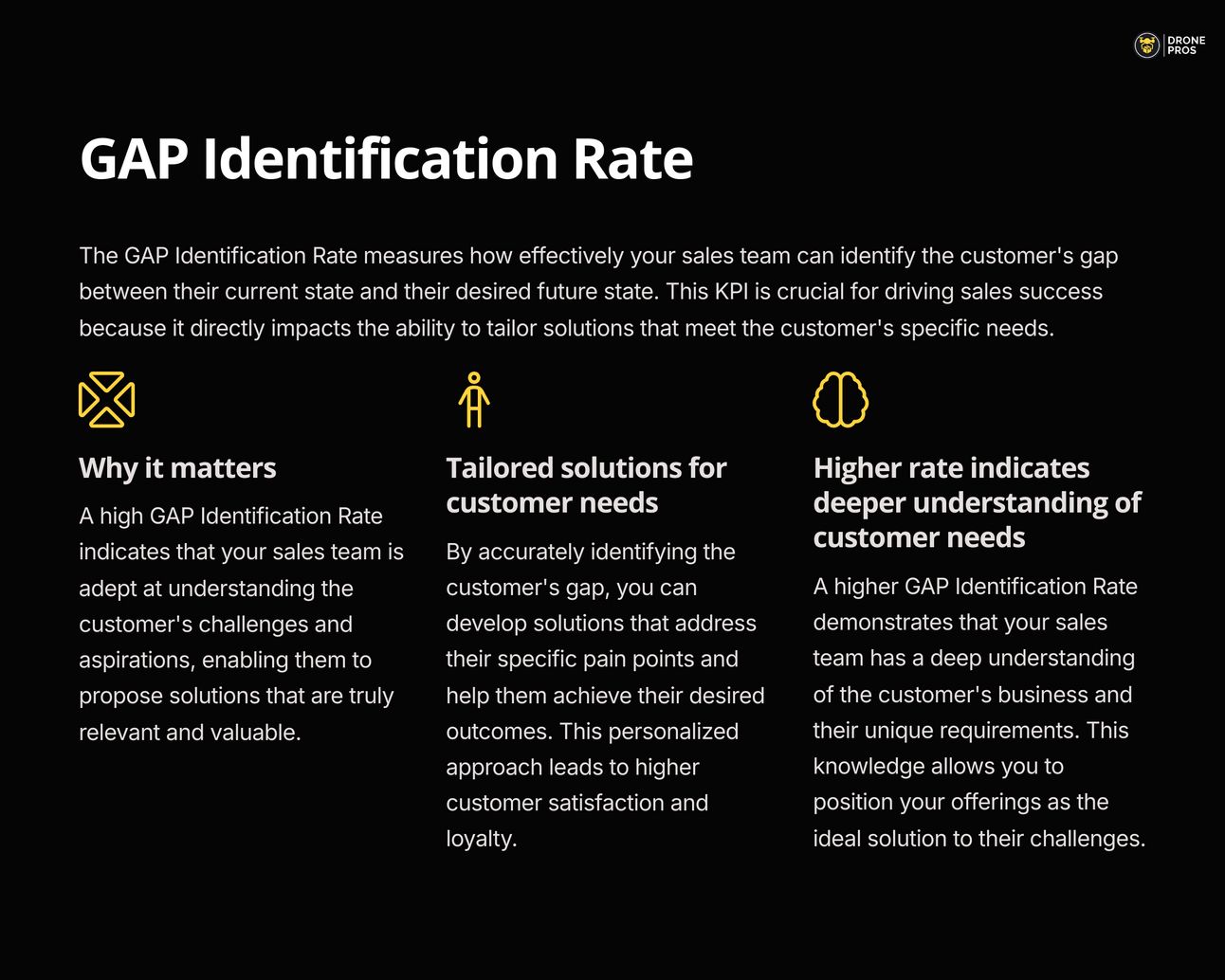
2. Solution Fit Score
Evaluate how well your proposed solution aligns with bridging the customer's gap.
Why it Matters: A higher Solution Fit Score means your offering is more likely to resonate with the customer, leading to higher conversion rates.
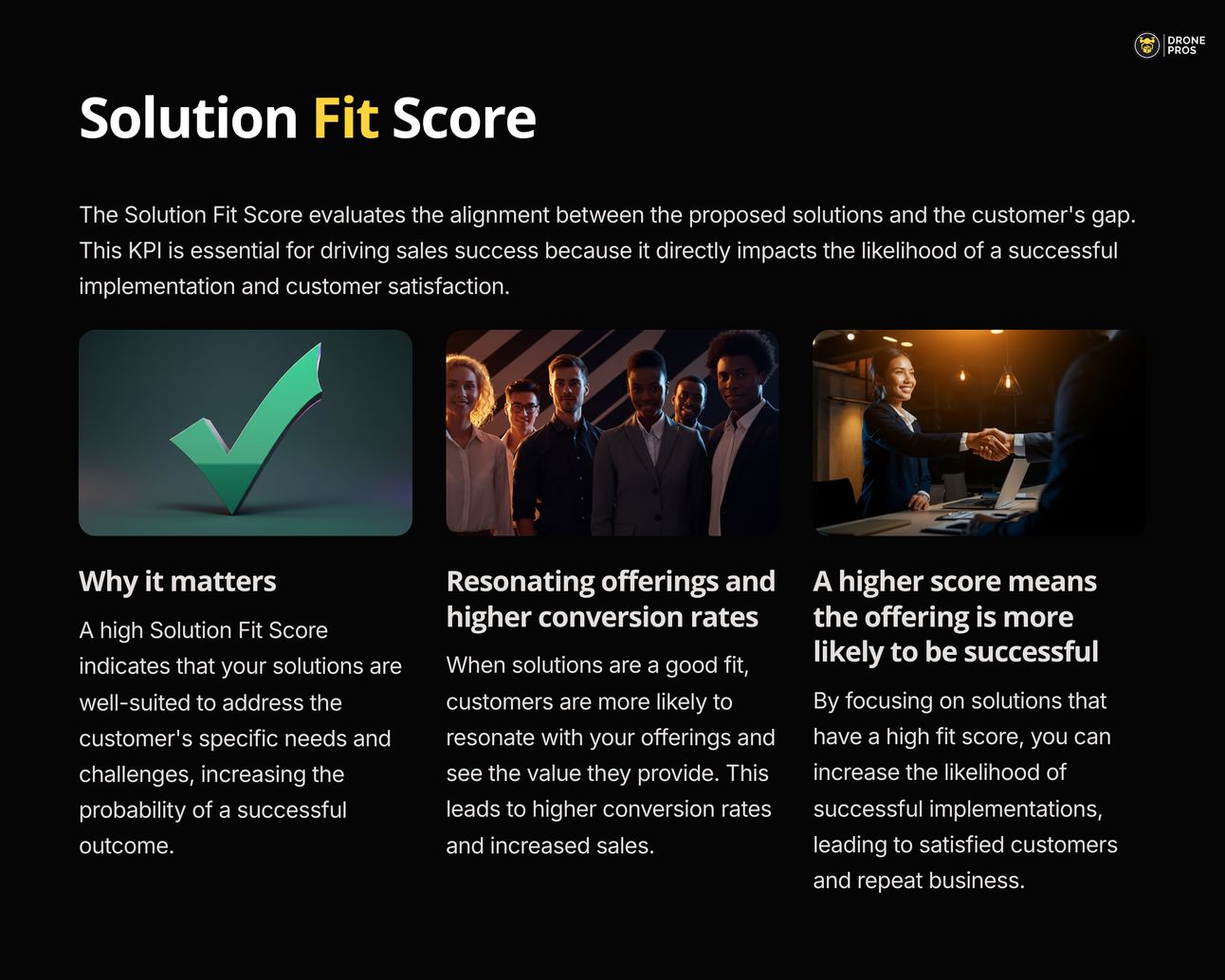
3. Average Sales Cycle Length
Tracks the average time it takes to close a deal from initial contact.
Why it Matters: Understanding this KPI helps you identify bottlenecks in your sales process and find ways to accelerate the cycle.
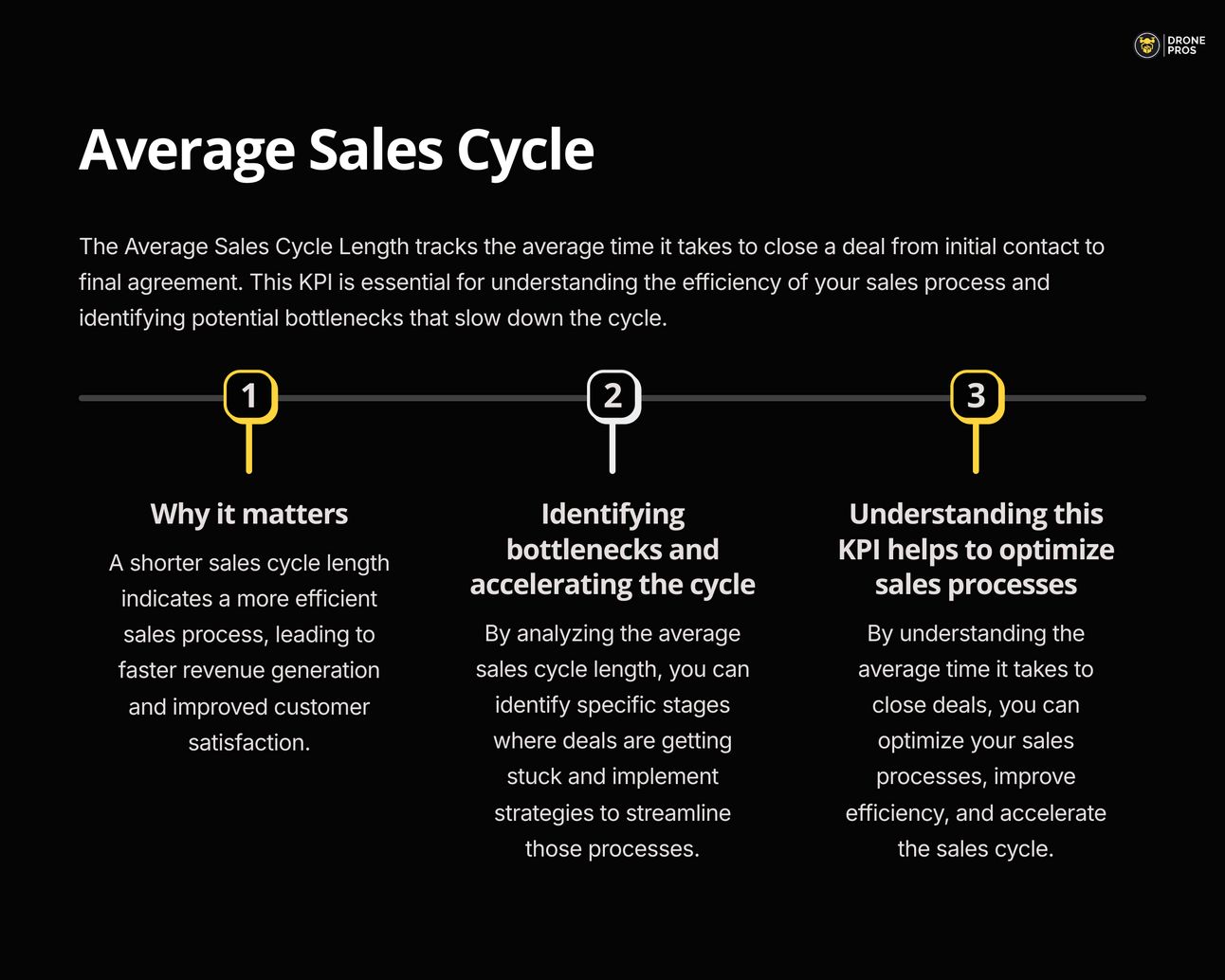
4. Win Rate
The percentage of deals won versus deals lost.
Why it Matters: A critical indicator of your sales effectiveness. Improving your win rate directly impacts revenue growth.

5. Customer Impact Score
Measures the tangible impact your solution has on the customer's business post-implementation.
Why it Matters: Demonstrates the real-world value of your offering, leading to higher customer satisfaction and repeat business.
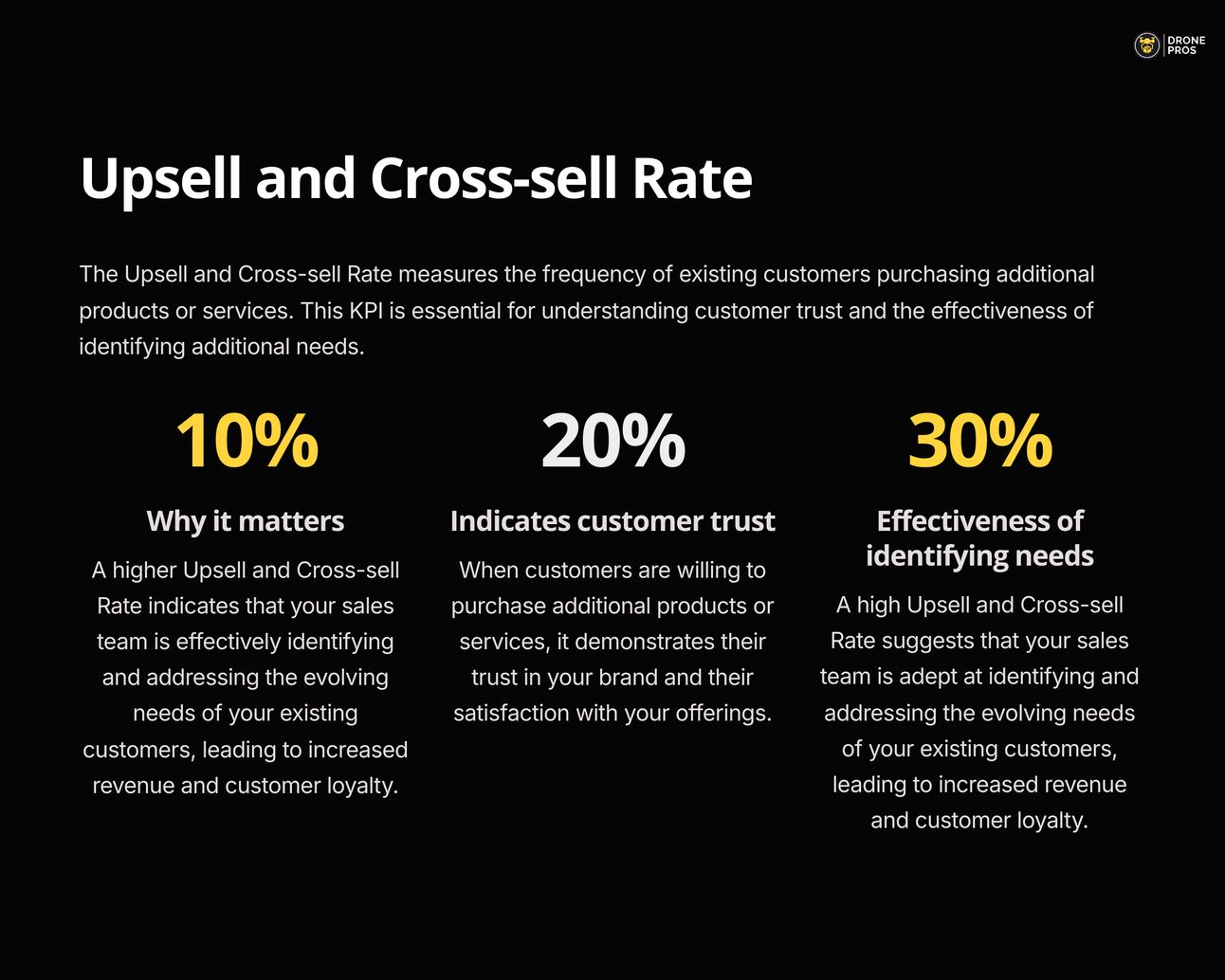
6. Upsell and Cross-sell Rate
The frequency at which existing customers purchase additional products or services.
Why it Matters: Indicates customer trust and the effectiveness of your sales team in identifying additional needs.

7. Customer Lifetime Value (CLV)
The total revenue expected from a customer throughout the relationship.
Why it Matters: Higher CLV suggests strong customer relationships and effective long-term sales strategies.
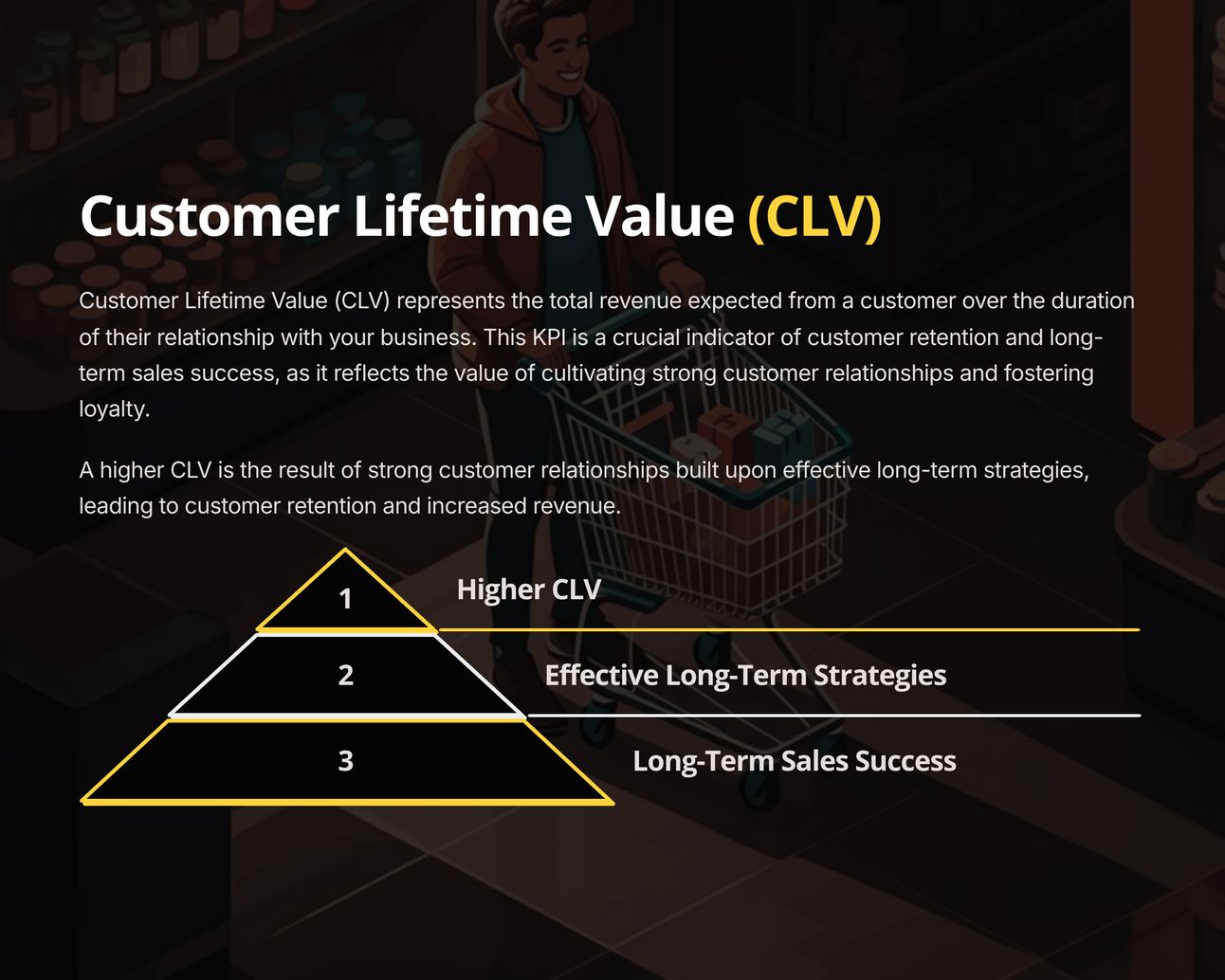
Frequently Asked Questions
Q1: What is GAP Selling, and why is it important?
A: GAP Selling is a sales methodology that focuses on identifying the gap between where a customer currently is and where they want to be. By understanding this gap, sales professionals can offer solutions that precisely meet customer needs, leading to higher sales effectiveness and customer satisfaction.
Q2: How do I measure the Gap Identification Rate?
A: Track the number of sales interactions where the customer's Current State, Future State, and the gap between them are clearly identified and documented. Divide this by the total number of sales interactions to get the rate.
Q3: What tools can help in tracking these KPIs?
A: Customer Relationship Management (CRM) systems like Salesforce or HubSpot can be customized to track these specific KPIs. Additionally, data analytics tools can provide deeper insights.
Q4: How can I improve my Solution Fit Score?
A: Invest in thorough customer research and training your sales team to ask the right questions. Tailor your solutions based on the specific gaps identified.
Q5: Why is Customer Impact Score important after the sale?
A: It demonstrates the real value your solution provides, which can lead to customer retention, referrals, and opportunities for upselling or cross-selling.
Key Strategies to Implement These KPIs
Train Your Sales Team: Equip your team with the skills to identify customer gaps effectively through workshops and role-playing exercises.
Leverage Technology: Use CRM systems to track interactions and KPIs automatically, reducing manual errors.
Regular Reviews: Conduct monthly or quarterly reviews of KPI performance to identify trends and areas for improvement.
Customer Feedback: Solicit feedback post-sale to gauge impact and satisfaction, feeding this information back into your sales process.
Align Sales and Marketing: Ensure both teams work together to create messaging and content that addresses customer gaps.
Conclusion
Measuring what matters is not just a catchphrase; it's a strategic approach to amplifying your sales success. By focusing on these seven essential GAP Selling KPIs, you gain a comprehensive understanding of your customer's needs and how effectively you're meeting them. This insight empowers you to make data-driven decisions, refine your sales strategies, and ultimately drive significant business growth.
Remember, the key to unlocking your sales potential lies in understanding your customer's journey from their Current State to their Future State and the impact your solution has in bridging that gap. Start implementing these KPIs today and watch your sales performance soar.
TRENDING
How AI is Revolutionizing Drone Navigation Systems
UAVs in Disaster Management: A Game Changer
The Rise of Drone Delivery Services Amidst Global Pandemic
Regulatory Updates: What the New FAA Rules Mean for Drone Operators
Drones and Environmental Conservation: Unlikely Allies
Notes
Meta Description:
"Discover the 7 essential GAP Selling KPIs every business must measure to bridge the gap between current and future customer states. Learn how to maximize impact, boost sales performance, and drive growth with actionable insights and strategies."
Tags:
GAP Selling KPIs
Sales Performance Metrics
Current State vs. Future State
Sales Impact Measurement
Customer Gap Analysis
Sales Strategy Optimization
Key Performance Indicators
Boost Sales Growth
Measure What Matters
Drone Industry Sales
Longtail Tags:
Essential GAP Selling KPIs for understanding customer states
How to measure impact in GAP Selling
KPIs to bridge current and future customer needs
Maximizing sales impact with GAP Selling metrics
Understanding GAP Selling KPIs for business growth
Strategies to Consider
Engaging Storytelling: Incorporate real-world examples or case studies to illustrate how tracking these KPIs has led to significant business improvements.
SEO Optimization: Use relevant keywords naturally throughout the content to improve search engine rankings and attract organic traffic.
Visual Aids: Include infographics or charts to visually represent KPIs and data, making complex information more digestible.
Interactive Elements: Add call-to-action buttons, downloadable resources, or quizzes to increase reader engagement and time on page.
Social Proof: Feature testimonials or quotes from industry experts to build credibility and trust with your audience.

